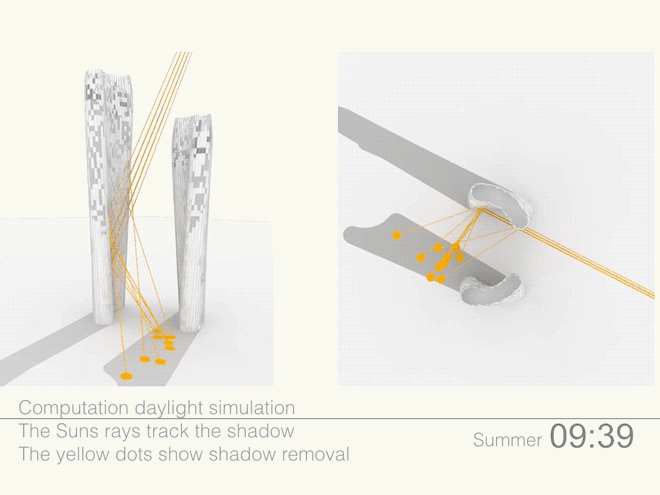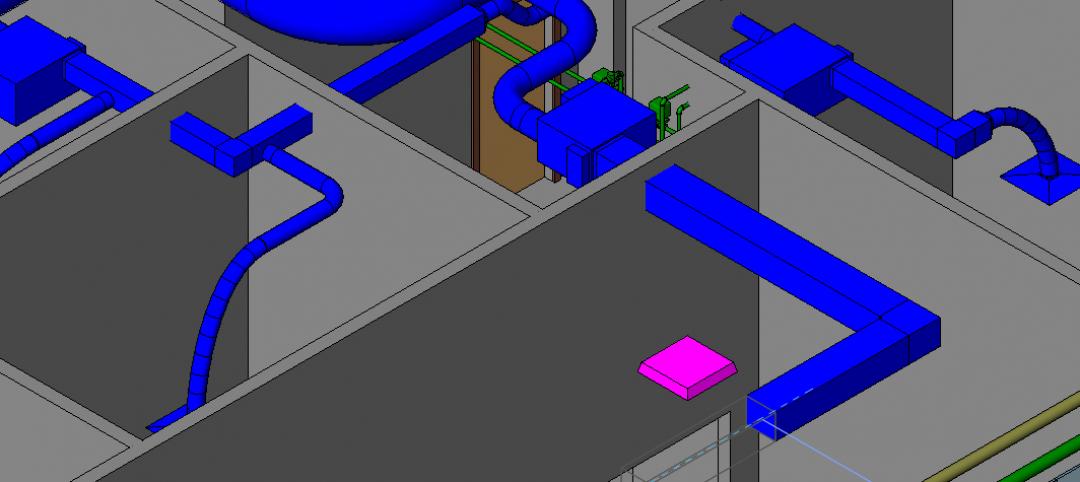To make sure surrounding, shorter buildings won’t be blocked by sunlight, architects in London’s NBBJ office have designed a scheme that will make tall towers reflect and diffuse sunlight.
But the human brain wasn’t alone in solving the shadow conundrum. Wired reports that the architects used a software called Rhinoceros, which allowed them to input various building requirements, and then used algorithms to generate designs that maximize the light reflected onto the ground. Multiple design options are then displayed for the architects.
“Some are bonkers,” Christian Coop, NBBJ’s Design Director, told Wired about the computer-generated designs. So after a basic design was produced, the architects needed to fine tune it and adjust the requirement.
The final design that was settled on is of a pair of highly reflective towers that are curved at the right places to bounce off light over the other tower’s shadow.

Because the light is diffused instead of projected away, it won’t be possible to fry an egg or melt plastic bags (and burn people).
“It’s definitely high time for this type of design to be baked into the building so it can play well with the environment,” Daniel Safarik, a spokesperson at the Council of Tall Buildings and Urban Habitat, told Wired. “It should be standard practice.”

Related Stories
| May 16, 2011
Dassault Systèmes to distribute Gehry Technologies’ digital project
Dassault Systèmes and Gehry Technologies announced that Gehry Technologies’ Digital Project products will be integrated into the Dassault Systèmes’ portfolio and distributed through Dassault Systèmes. Digital Project is a suite of 3D BIM applications created by Gehry Technologies using Dassault Systèmes’ CATIA as a core modeling engine.
| May 3, 2011
Scott Simpson of KlingStubbins on how to get more value from BIM
Too few AEC professionals have developed a strategic idea of how BIM can and should re-shape professional practices and drive dramatic improvements in both creativity and production, according to Scott Simpson, FAIA, senior director of KlingStubbins. While BIM enables the exploration of design ideas quickly and in new and different ways, it can lead people to think they’re making more progress than they actually are. A simple adjustment in perspective is all it takes to put things right.
| May 2, 2011
URS acquires Apptis Holdings, a federal IT service provider
SAN FRANCISCO, CA and CHANTILLY, VA– April 28, 2011 – URS Corporation and Apptis Holdings, Inc., a leading provider of information technology and communications services to the federal government, announced that they have signed a definitive agreement under which URS will acquire Apptis.
| Apr 12, 2011
BIM Grows Up: Separating Hype from Reality in a 3D World
While BIM adoption still lags in both design and construction, some enterprising owners, architects, and contractors are unlocking the potential of this dynamic technology.
| Apr 5, 2011
Are architects falling behind on BIM?
A study by the National Building Specification arm of RIBA Enterprises showed that 43% of architects and others in the industry had still not heard of BIM, let alone started using it. It also found that of the 13% of respondents who were using BIM only a third thought they would be using it for most of their projects in a year’s time.










